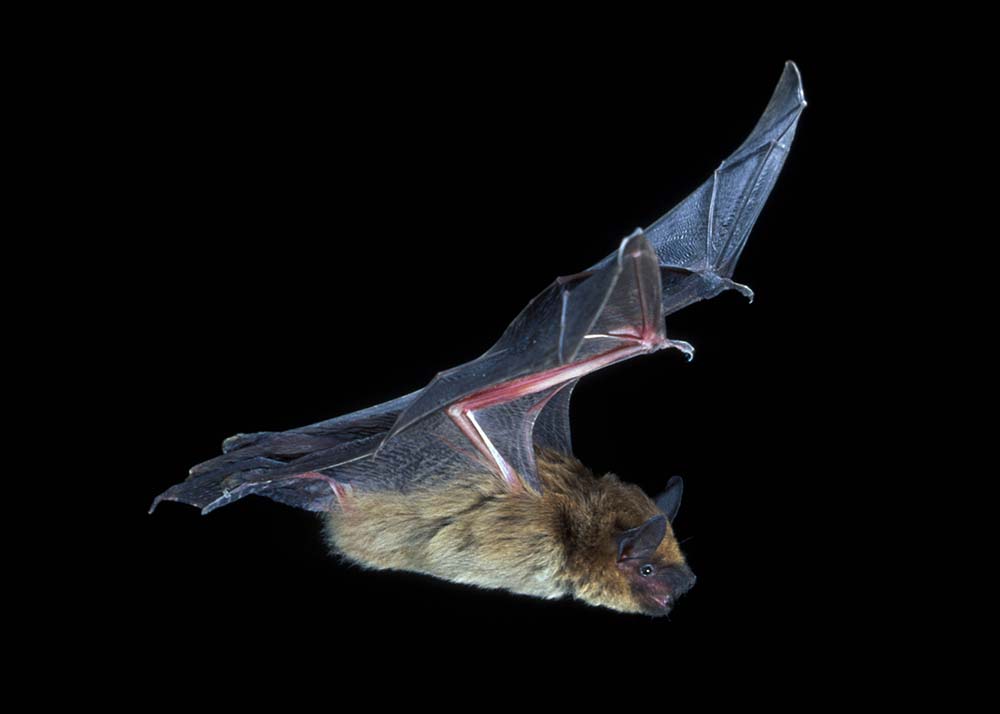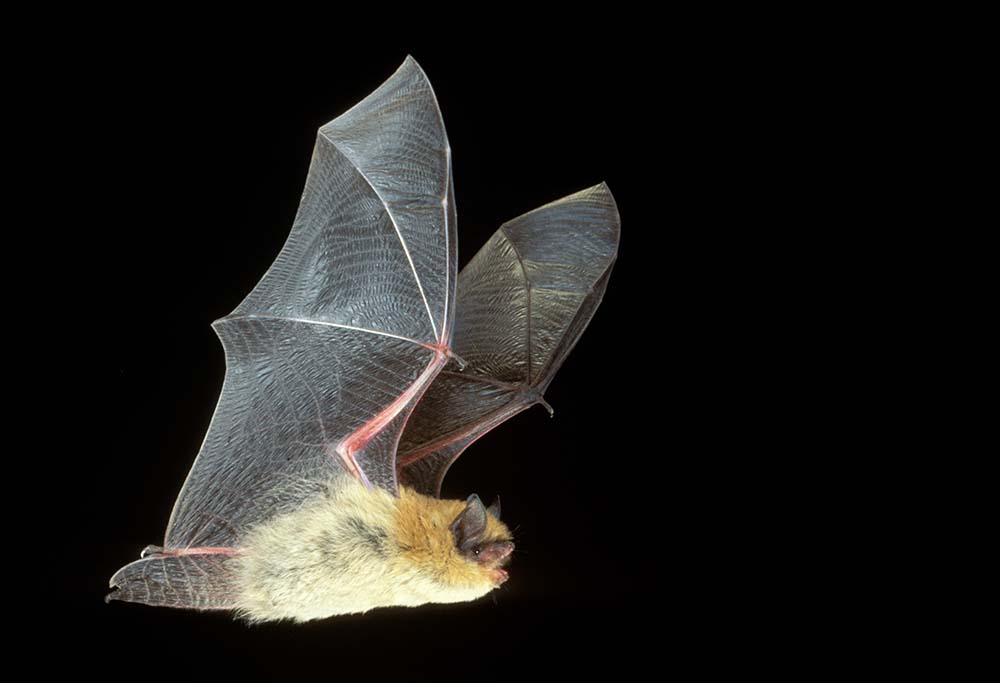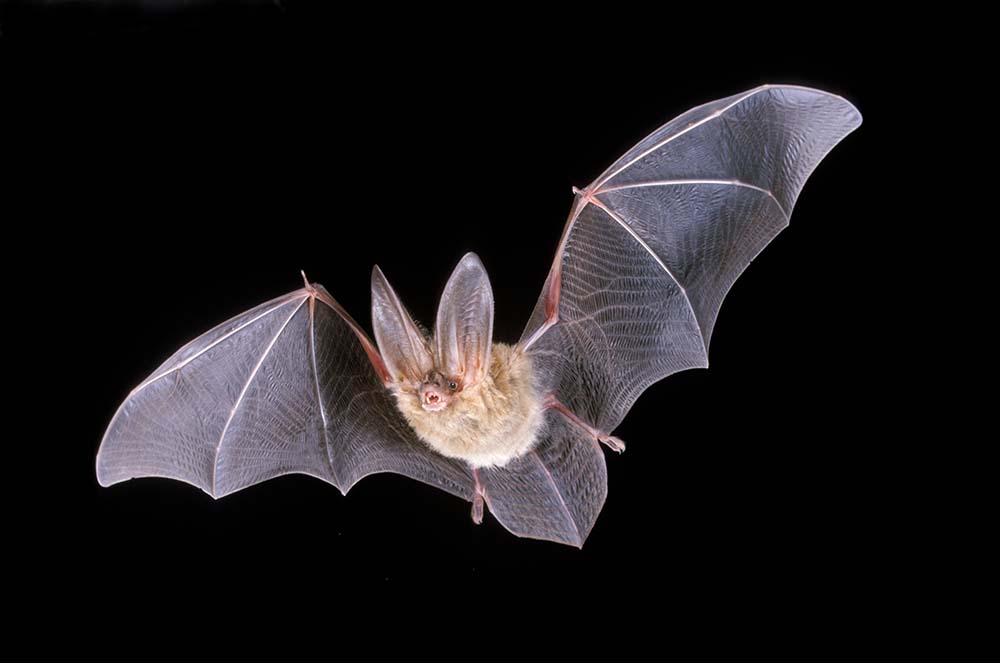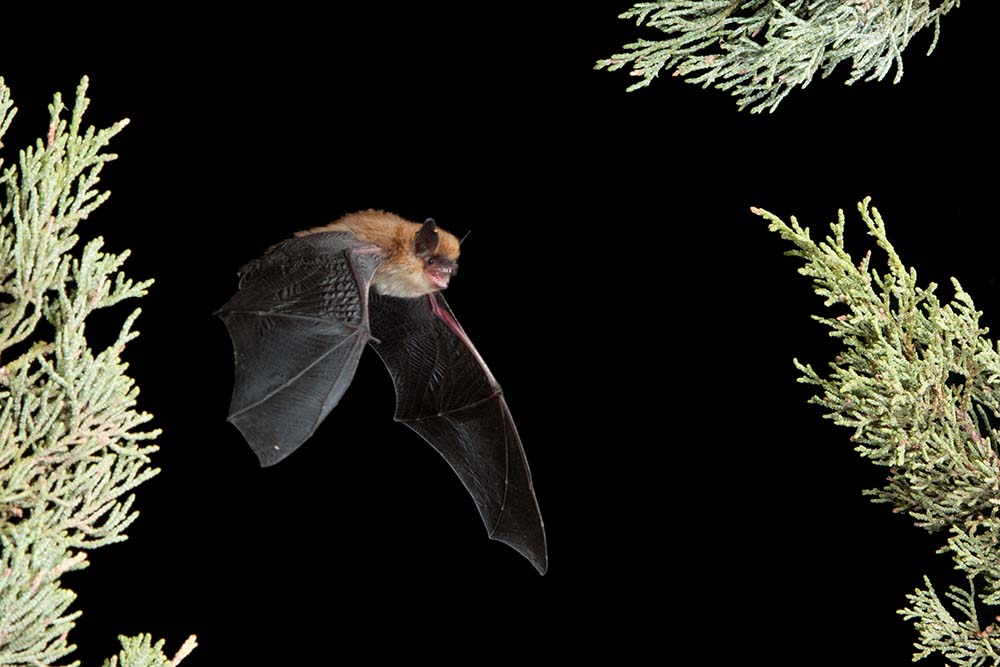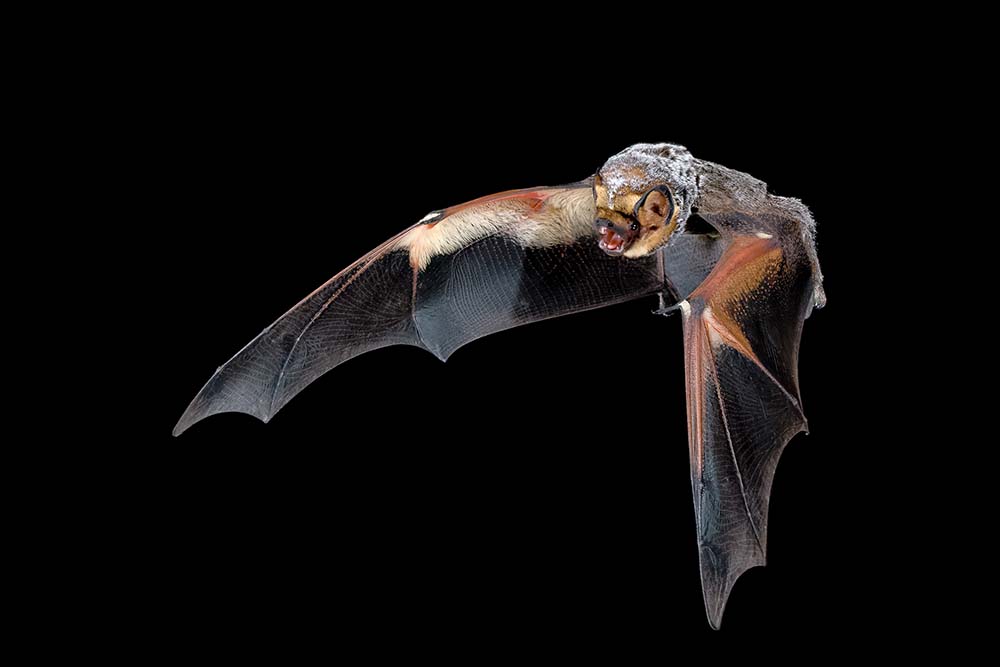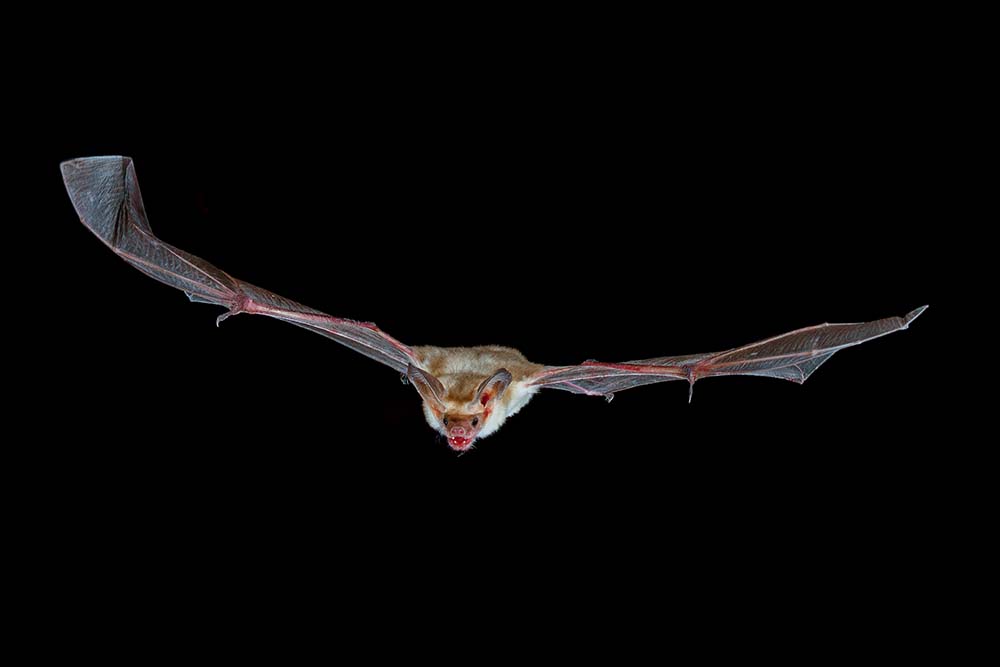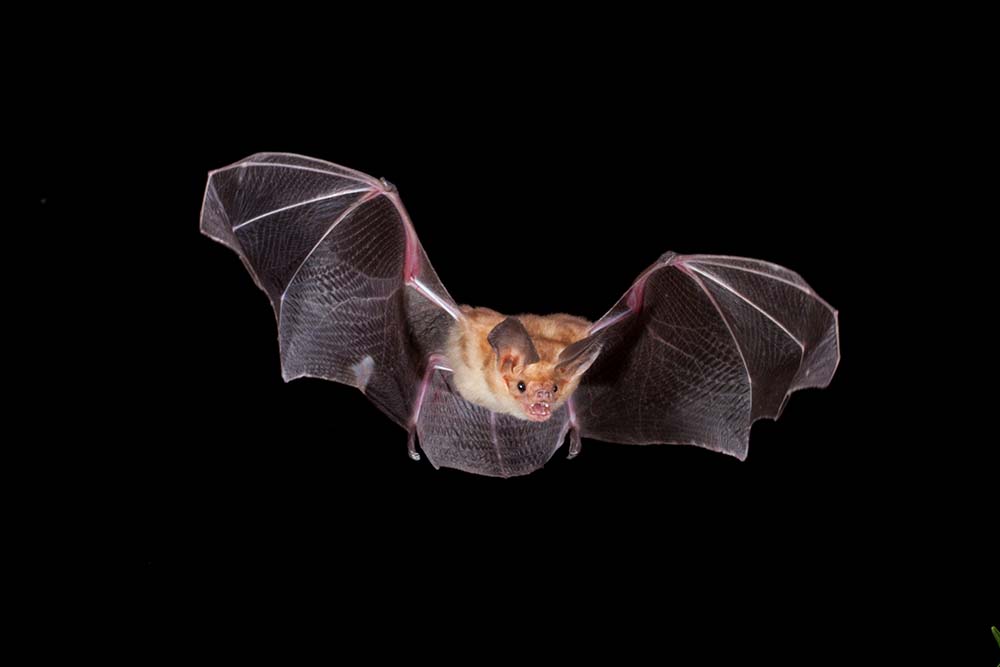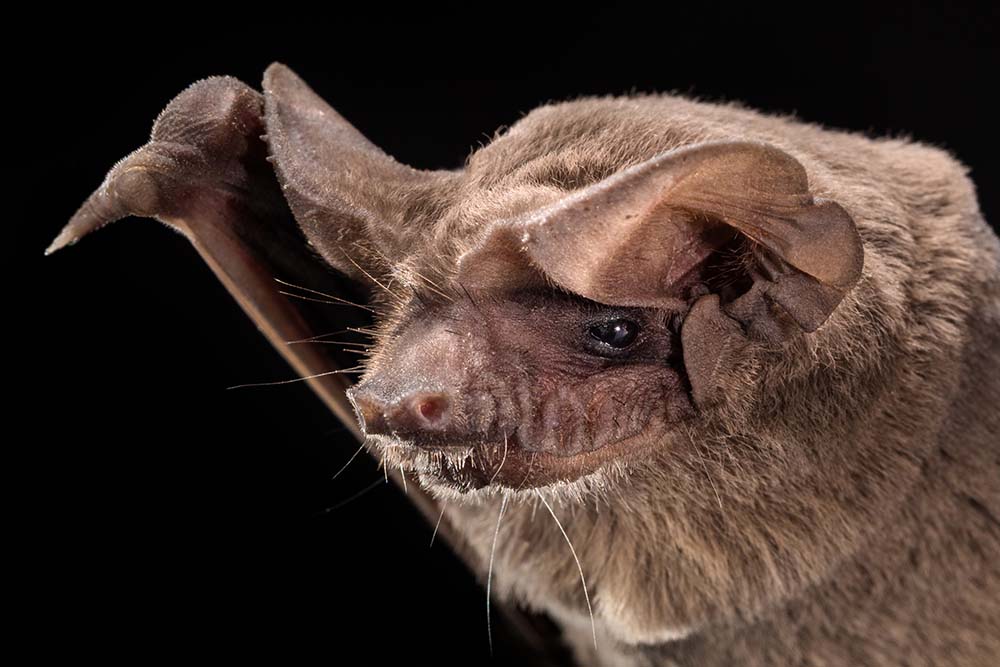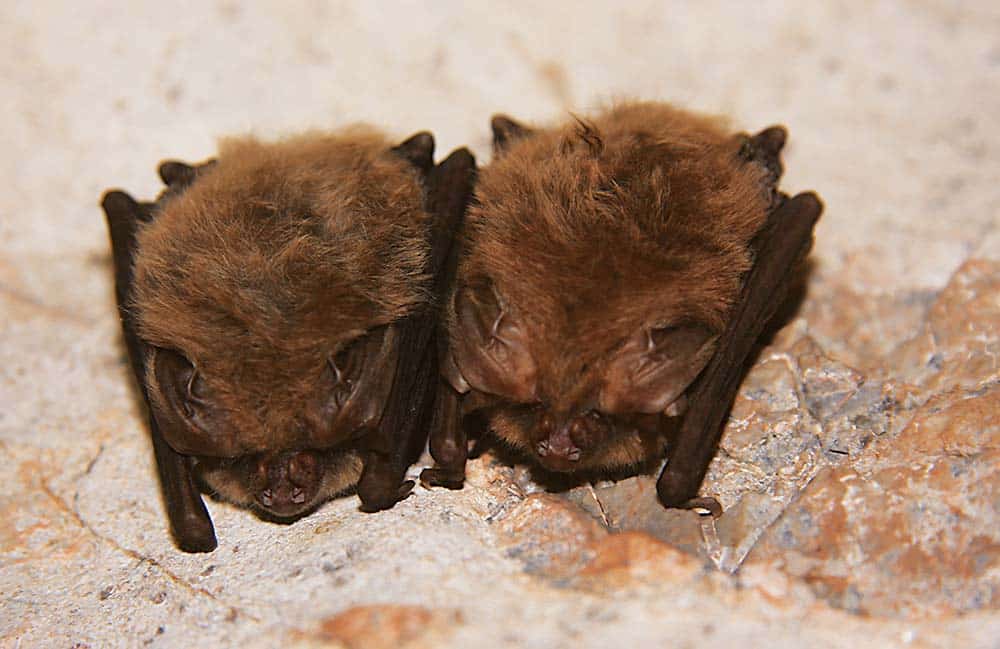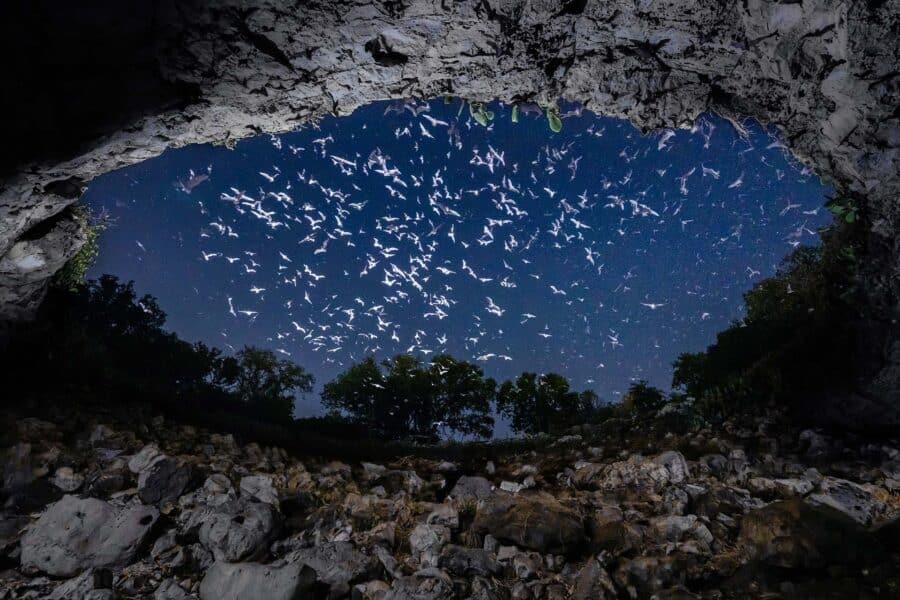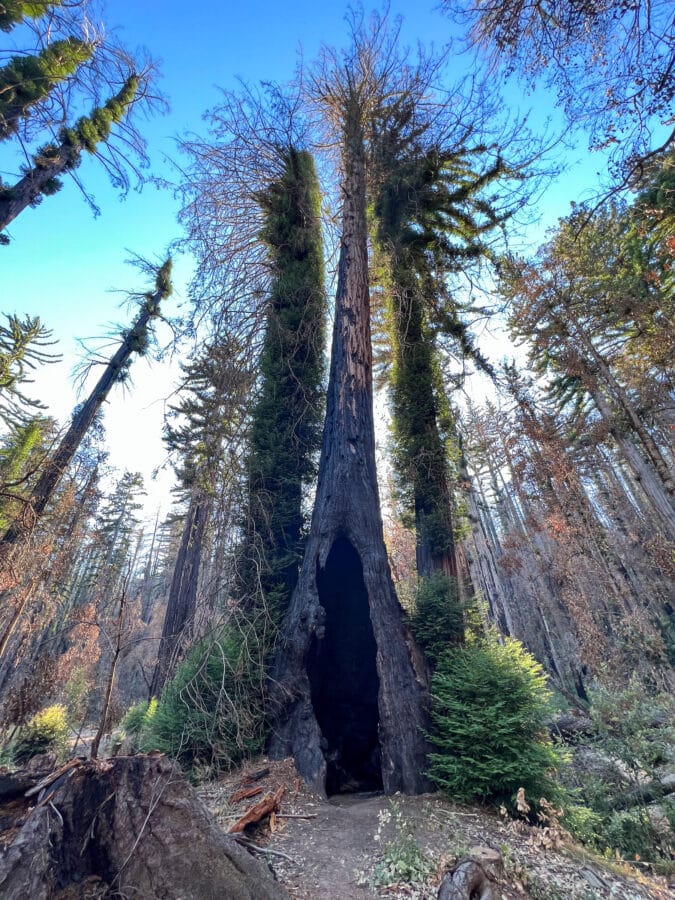Bat Chat: Nocturnal Knowledge with Dr. Winifred Frick
They’re more than creatures that go bump in the night—bats are important mammals in the redwood forest. Learn more about the bats that call California home with Dr. Winifred Frick, Chief Scientist at Bat Conservation International and a professor in Ecology and Evolutionary Biology at UC Santa Cruz.
Many people associate bats with Halloween or general spookiness, an idea popularized by the many cultural depictions of Dracula morphing into a black bat, flying at midnight and guided by the light of the moon, on his way to find his next victim. But haunting caricatures aside, these nocturnal creatures are critical members of our redwood ecosystem.
The Bats of California's Coast Redwoods
To learn more about bats and how they interact with the redwood forest, we spoke with Dr. Winifred Frick, Chief Scientist at Bat Conservation International and an adjunct professor in Ecology and Evolutionary Biology at UC Santa Cruz. “There are about 13 bat species that live in the coast redwood forests of California—redwood trees make excellent bat homes. Old redwood trees are especially valuable as bat homes, as their ‘basal hollows’ serve as ‘caves’ for some bat species. In addition, many bat species will use crevices or bark fissures in redwood trees to roost.”
Old growth trees are ideal for bats, because they have open understories which allow the mammals to maneuver in flight much easier while foraging. Some bats fly up into the redwood canopy, though we don’t know much about their behavior in the canopy since it’s difficult to study a mammal that prefers to be 250-feet off the ground.
The sheer size of a redwood can help some bats who need more space than others. “The Townsend’s big-eared bat normally has to live in caves (or cave-like structures like abandoned houses or mines). In the redwood forest, basal hollows, or goose-pins, are big enough to feel like a cave, so Townsend’s big-eared bats will roost in redwood trees,” says Dr. Frick.
A few of the species—hoary bats, western red bats, silver haired bats—in California are migratory, but most are residents. “[Most bats stay in the state], though they will move to different roosts seasonally,” says Dr. Frick. “Females often group up together in the summer season to have their pups and rear young, and then disperse for winter to find roosts that are thermally stable and protected during winter.”
She adds a fun fact: California now has a state bat, the Pallid bat.
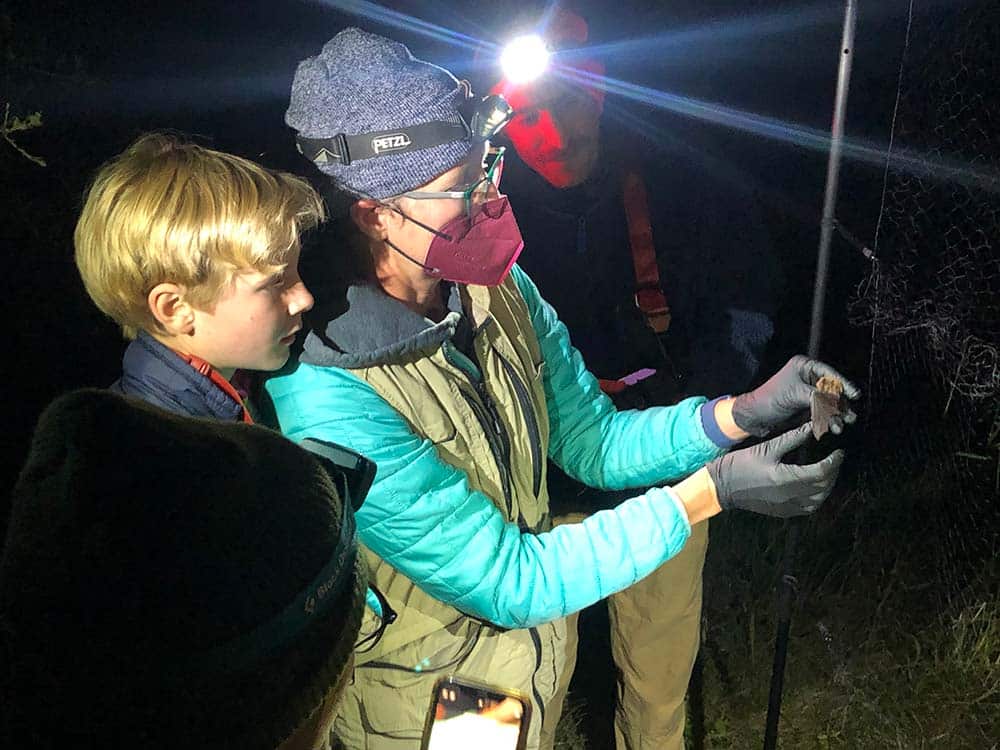
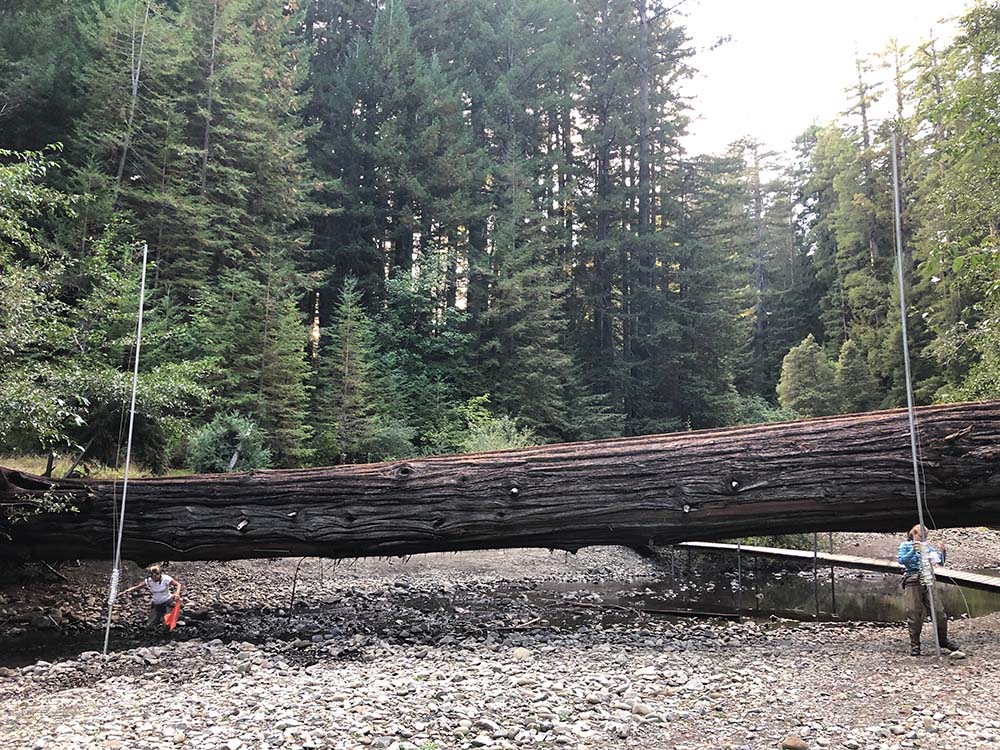
All photos courtesy: Bat Conservation International. Credits: Row 1: J. Scott Altenbach; Row 2: Bruce D. Taubert; Josh Hydeman; Hydeman; Row 3: Taubert; Hydeman; BCI
Full List of Bat Species Commonly Occurring in Coast Redwood Forests
| Scientific name | Common name |
|---|---|
| Antrozous pallidus | Pallid bat |
| Corynorhinus townsendii | Townsend’s big-eared bat |
| Eptesicus fuscus | Big brown bat |
| Lasionycteris noctivagans | Silver-haired bat |
| Lasiurus blossevillii | Western red bat |
| Lasiurus cinereus | Hoary bat |
| Myotis californicus | California myotis |
| Myotis evotis | Long-eared myotis |
| Myotis lucifugus | Little brown myotis |
| Myotis thysanodes | Fringed myotis |
| Myotis volans | Long-legged myotis |
| Myotis yumanensis | Yuma myotis |
| Tadarida brasiliensis | Mexican free-tailed bat |
All bats in California are insectivorous—meaning they dine on a smorgasbord of flies, moths, beetles, and other bugs. This special diet helps to carry nutrients upslope from the forest’s streams. Bats like the Yuma myotis (Myotis yumanensis) forage for emergent aquatic insects—that is, those transitioning from a life in water, as juveniles, to a life on land, as adults.
The bats feed for insects in riparian habitats, areas where the land meets creeks and streams, then move nitrogen back up to the forest through their “guano rain.”
Counter to their depictions in popular culture, bats are harder to find in fall and winter—their active season is typically the dry summertime. They often have their pups in June; the pups—just one per litter—nurse, learn to fly, and become independent once the weather starts to cool down, before the transition to autumn. During the cold season, bats will hibernate, or enter torpor, to save energy, as there are fewer insects around for them to munch on.
None of the bat species of California are listed as Federally Endangered or Threatened, but some of them are species of conservation concern, including Townsend’s big eared bat (Corynorhinus townsendii), Western red bat (Laisurus blossevillii), Fringed myotis (Myotis thysanodes), and Hoary bat (Lasiurus cinereus). Dr. Frick says:
Bats in California face several threats, including the pervasive threat of habitat loss and effects of climate change, as well as specific threats like wind energy turbines. Migratory bats, such as the hoary bat, are at particular risk from wind energy turbines—each fall, hoary bats travel through California’s redwood range on remarkable nighttime journeys. Scientists are still discovering how these tiny travelers find their way through the forest canopy and beyond.
The effects of climate change on bats include extreme weather, drought, and wildfires. The disease White-nose Syndrome is an imminent threat, although bats in California have not yet shown signs of the disease.
All creatures of the redwood forest are important and have a role to play when it comes to maintaining a healthy ecosystem, and bats are no exception. Like marbled murrelets, they need redwoods to roost and need the streams that flow beneath the trees to find food. But bats don’t just help the redwood forest—they help maintain a healthy ecosystem around the globe. Their guano is considered a natural fertilizer, and globally contributes to the health of agriculture and agroforestry by consuming insect pests that damage crops. There are now 1,500 species of bats recognized, which means that bats make up over 20% of all mammal species.
Want to learn more about bats and how you can help them? Dr. Frick shares these valuable resources and suggestions:
- Become a member of Bat Conservation International
- Watch the award-winning documentary film The Invisible Mammal (screening in San Francisco on 10/25, with Dr. Frick in attendance!)
- Donate to Sempervirens Fund to support and protect the redwood forests that California bats rely on.
